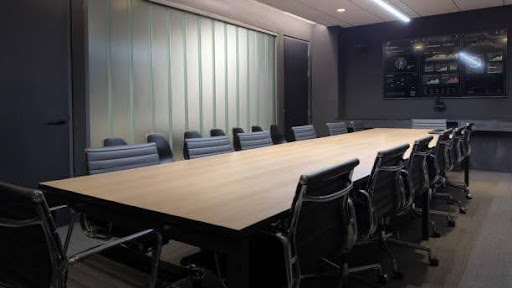In the dynamic landscape of modern business, effective communication and collaboration are paramount. At the heart of this synergy lies the conference table – a symbol of unity, productivity, and shared vision. Far beyond a mere piece of furniture, the design of conference tables plays a pivotal role in shaping the dynamics of meetings, fostering creativity, and driving innovation. In this article, we delve into the evolution, significance, and contemporary trends in conference table design, uncovering the intricate balance between form, function, and human interaction.
Evolutionary Journey
The genesis of conference table design can be traced back to ancient civilizations, where communal gatherings were central to decision-making and discourse. Over the centuries, the concept of the conference table has evolved in response to changing social dynamics, technological advancements, and architectural trends. From the grandeur of medieval council chambers to the sleek minimalism of modern boardrooms, each iteration reflects the values, aspirations, and organizational culture of its time.
Functionality and Versatility
At its core, the conference table serves as a multifunctional platform for collaboration, idea exchange, and decision-making. Modern conference tables are designed to accommodate a variety of activities, from formal presentations and brainstorming sessions to informal discussions and team meetings. Versatility is key, with features such as modular configurations, integrated power outlets, and multimedia connectivity enabling seamless transitions between different modes of interaction.
Ergonomics and Comfort
Recognizing the importance of user comfort and well-being, conference table design prioritizes ergonomics to ensure optimal posture and productivity during prolonged meetings. Height-adjustable tables, ergonomic seating options, and integrated cable management systems contribute to a clutter-free and comfortable environment, allowing participants to focus on the agenda at hand. Additionally, considerations such as adequate legroom, lighting, and acoustics play a crucial role in enhancing the overall meeting experience.
Technology Integration
In the age of digital transformation, conference tables are embracing technology to facilitate seamless communication and collaboration. Integrated audiovisual systems, wireless presentation tools, and video conferencing capabilities enable participants to share ideas and information across geographical boundaries, fostering a sense of connectedness and inclusivity. Moreover, interactive displays, touchscreen controls, and virtual whiteboards empower users to engage with content in real-time, enhancing engagement and productivity.
Aesthetic Appeal and Brand Identity
Beyond functionality, the design of conference tables serves as a visual representation of the organization’s brand identity and values. Whether it’s a sleek, contemporary table reflecting a culture of innovation or a timeless, heritage-inspired design evoking a sense of tradition and stability, the aesthetic language communicates a clear message to participants and visitors alike. Customization options, such as branded logos, finishes, and materials, allow organizations to imprint their unique identity onto the conference table, reinforcing brand recognition and cohesion.
Collaborative Spaces and Flexible Design
As the nature of work continues to evolve towards flexibility and agility, conference table design adapts to accommodate diverse needs and preferences. From modular configurations and nesting tables to convertible surfaces and movable partitions, flexibility lies at the heart of contemporary conference table design. Such versatility enables organizations to transform meeting spaces according to the specific requirements of each session, whether it’s a large-scale presentation, a breakout discussion, or a one-on-one consultation.
Sustainability and Environmental Responsibility
In an era of heightened environmental awareness, conference table design is increasingly influenced by sustainability principles. Manufacturers are adopting eco-friendly materials, such as FSC-certified wood, recycled metal, and low-emission finishes, to minimize the carbon footprint of furniture production. Moreover, modular and adaptable designs promote longevity and circularity, reducing waste and resource consumption over time. By prioritizing sustainability, organizations demonstrate their commitment to environmental responsibility while creating inspiring and functional meeting spaces.
Conclusion
The conference table stands as a beacon of collaboration, innovation, and shared purpose in the modern workplace. From its historical origins to its contemporary manifestations, conference table design embodies the evolution of business practices, cultural norms, and technological advancements. By prioritizing functionality, ergonomics, technology integration, and sustainability, organizations can create meeting spaces that foster creativity, facilitate communication, and drive success in an ever-changing world.

